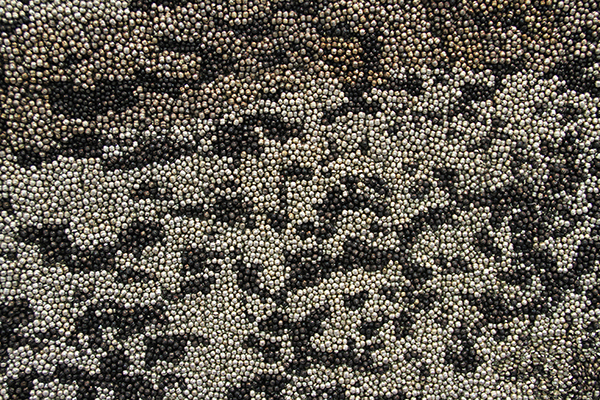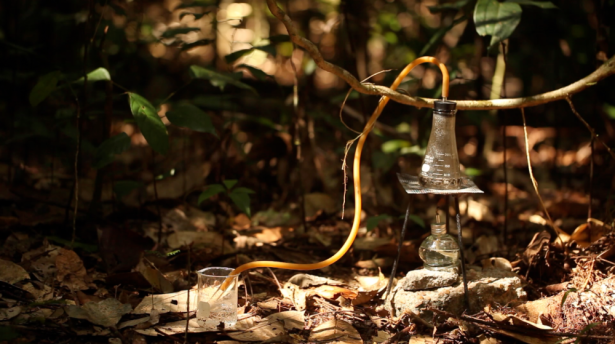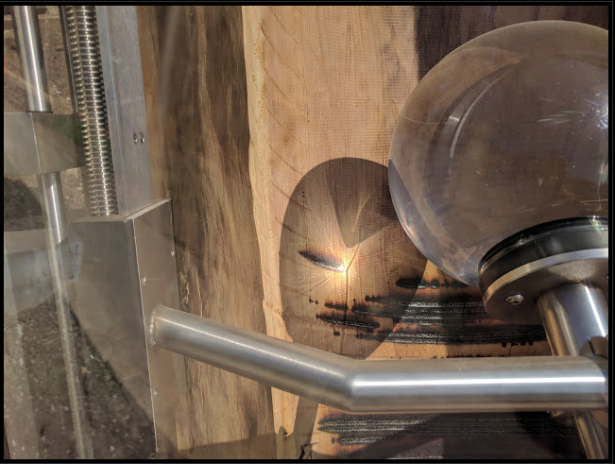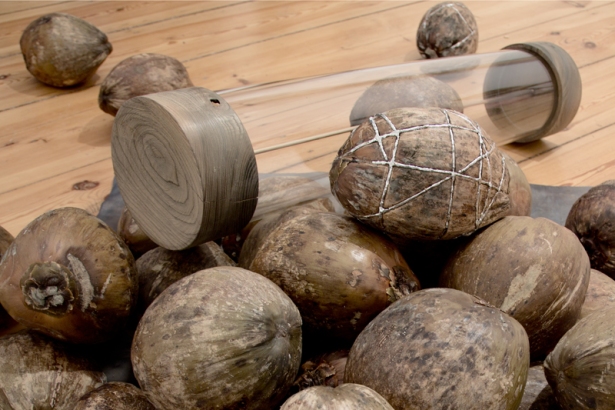This post comes from the Artists and Climate Change Blog
In the year since the election of That Person Who Should Not Have Been Elected, I have experienced, like many others in the States and beyond, a whirlwind of emotions: rage, worry, defeat, confusion, exhaustion, hope. I have been to theatrical events which have both evoked these feelings and expanded my empathy for people who voted in a way I thought unthinkable. I have gone out into the streets in protest more times than I have in all my previous years combined. In this moment of anniversary, I am focused not on the destruction that has been done at the hands of my government, but on the communities I’ve been a part of, on the insistence on justice, and on my reinvigorated connection to people and the land we share.
One year ago, I worked with Theater In Asylum on the The Debates, and wrote pre-election thoughts here. On that election night, my Debates collaborators and I formed the political theatre collective Back to Work, as a support network. Together we marched on Washington, built a Feminist Flashmob, and most recently, staged a reading of Sinclair Lewis’ It Can’t Happen Here from 1936. As part of nation-wide readings, Theater In Asylum and Back to Work collaborated on an evening of Lewis’ play with fundraising for relief efforts in Puerto Rico.
In It Can’t Happen Here, the editor of a liberal newspaper in small-town Vermont witnesses the rise of a populist, anti-labor, militaristic politician, all the way to the presidency. The editor and his family discover just how quickly fascism spreads, violence reigns, and the free press is silenced. A clear turning point is when the editor is forced to turn his position at the paper over to a member of the new administration. Lewis also looks at the education – or indoctrination – of youth as the grandson of the editor flaunts a uniform of the militaristic president’s party.

Reading of It Can’t Happen Here, directed by Paul Bedard, in collaboration with Theater In Asylum and Back to Work Collective. Photo by Paul Bedard.
While the play certainly dates itself through pre-World War II references, the parallels to our current governmental situation – 80 years later – is uncanny. I was reminded of current events, littered with “fake news†buzz and political leaders acting against the interests of the people. The propaganda spewed by the president in Lewis’ play is reminiscent of Trump’s tweets. It is happening here. But, fortunately, rising fascism is being met with a persistent public voice clamoring to tear it down (especially as we’ve seen in last week’s legislative and gubernatorial elections)! In my experience of hearing the play, with a room full of people from all backgrounds, I felt the act of our collective resistance. When divisive and destructive energies occupy seats of power, I honor spaces of compassionate, receptive, and joyful energy as persistence.
This Fall also marks the fifth anniversary of Hurricane Sandy. While I was not living in New York at the time, the reverberations of the superstorm have been present in my two years of being here: from the subways, to rainwater management, to community organizing for the most vulnerable New Yorkers, often people of color affected by sea level rise from Brooklyn to Upper Manhattan. That is why on October 28th, I joined five thousand fellow New Yorkers to march across the Brooklyn Bridge. We marched in commemoration of the lives affected by Sandy as well as by this year’s disastrous storms in Houston, Florida, and Puerto Rico. The Sandy5 March indicated that New Yorkers remember, and recognize the link between policy and climate change. We do live in a progressive city, but there is still room to create more sustainable and just policies for more residents.
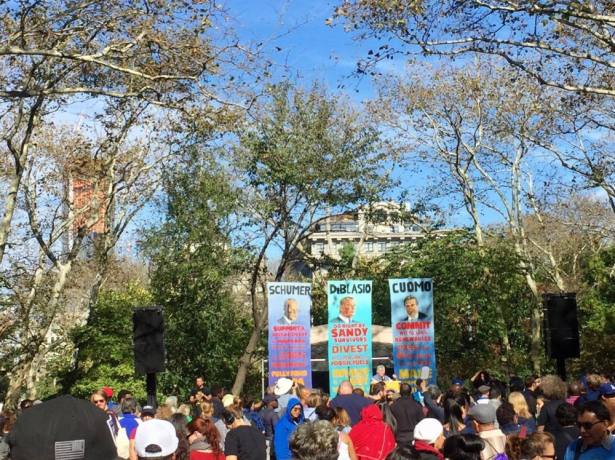
Rally in preparation for the Sandy5 March.
As my friends and I marched, we enjoyed the abnormally-sunshiny late-October sun, the beats of musicians around us, and new and familiar chants. Turning the corners through Lower Manhattan, with more room to move and groove, the Sandy5 March brought a literal dance party into the streets. This instance of public, collective joy was so inspiring to me. I marched with people I knew, but at the same time saw thousands of unfamiliar faces, brought together by similar intentions.

Marching across the Brooklyn Bridge.
I am propelled to keep moving, and re-energized by large public demonstrations like the Sandy5 March. I am also invigorated by the transmission of knowledge through international gatherings such as COPs (Conference of the Parties). As followers of this United Nations climate summit know, the 23rd Conference is currently underway in Bonn, Germany. It was two years ago, at COP21, that the Paris Climate Agreement was signed. Since the Trump administration’s rejection of the agreement earlier this year, state, local, and business leaders have stepped up to show the rest of the world that the United States still intends on being part of global efforts toward sustainability. Adding to these efforts, I am convening with local artists and friends as part of Climate Change Theatre Action, around art and conversation and food. These happenings are resistance, in the face of an authority that attempts to tear us apart. We will see what this COP brings. Regardless of what corrupted power does or says, the people, united, will never be defeated.

Marching across the Brooklyn Bridge.
Take Action
Climate Change Theatre Action 2017 is in its final week. Find an event near you.
Join one of many campaigns for a resilient and renewable New York. Find out about the policy demands of the Sandy5 March here.
Tweet in support of the US People’s Delegation at COP23 in Bonn, Germany, and populate Twitter with demands to Trump for climate action.
Share in Climate Optimism.
______________________________
Julia Levine is a creative collaborator and vegetarian. Originally from St. Louis, Julia is now planted in the New York City downtown theatre realm. As a director, Julia has worked on various projects with companies that consider political and cultural topics, including Theater In Asylum, Honest Accomplice Theatre, and Superhero Clubhouse. She is on the Marketing team at HERE Arts Center and is a co-organizer with Climate Change Theatre Action. Julia writes and devises with her performance-based initiative, The Food Plays, to bring questions of food, climate, and justice into everyday life.
About Artists and Climate Change:
Artists and Climate Change is a blog that tracks artistic responses from all disciplines to the problem of climate change. It is both a study about what is being done, and a resource for anyone interested in the subject. Art has the power to reframe the conversation about our environmental crisis so it is inclusive, constructive, and conducive to action. Art can, and should, shape our values and behavior so we are better equipped to face the formidable challenge in front of us.















